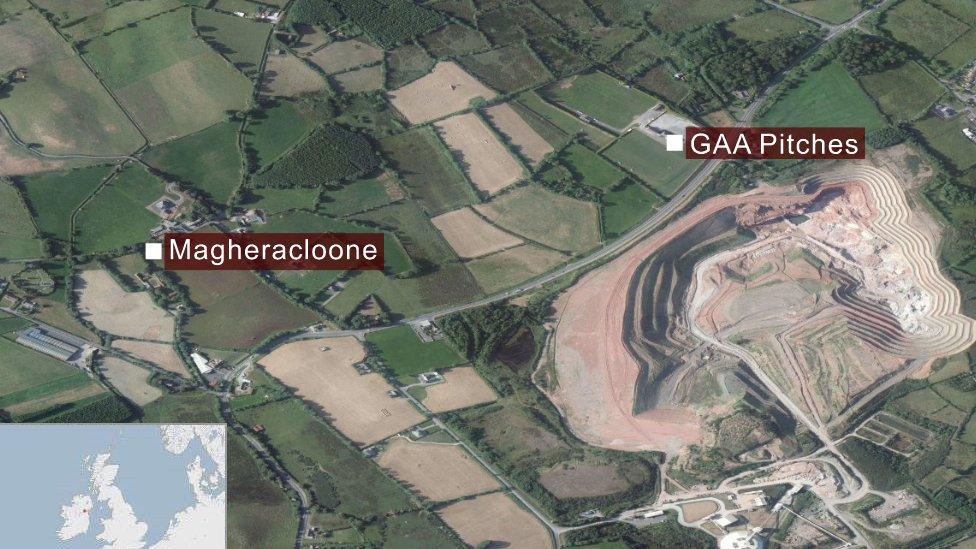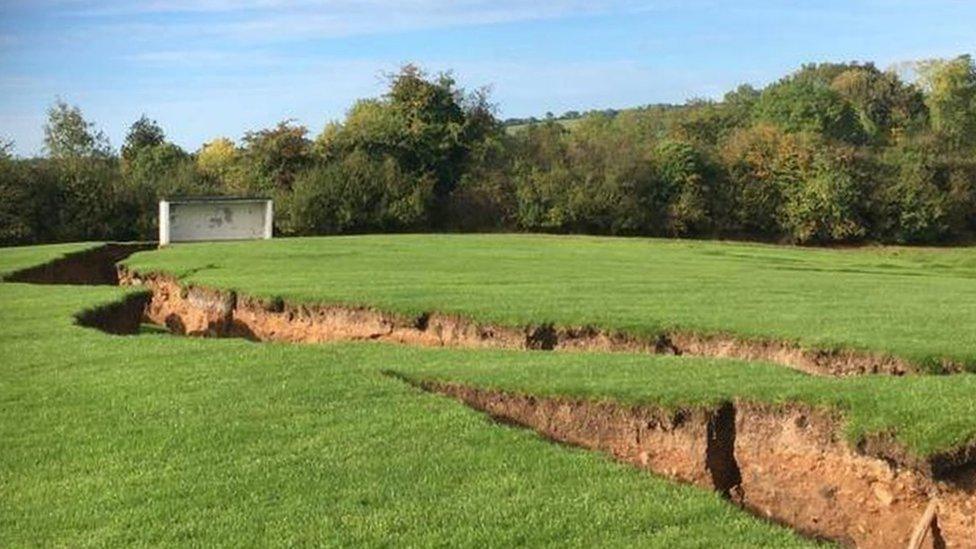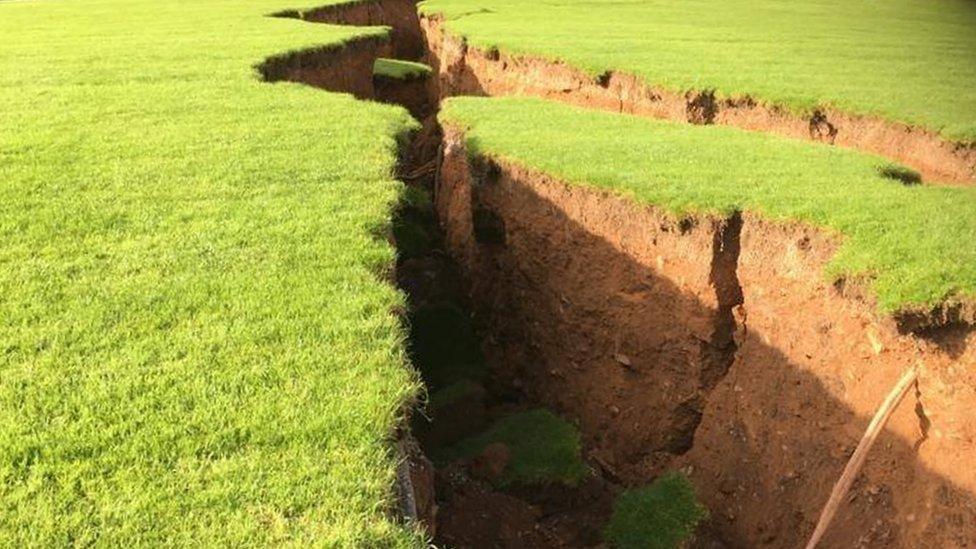New sinkhole opens up in Monaghan
- Published

The new sinkhole is near Magheracloone GAA club which was damaged by other holes in September
A new sinkhole has opened up near a GAA club that subsided when a mine collapsed in County Monaghan.
The new hole is 9m (30ft) wide and is 35m (115ft) away from the LP4900 road at Drumgossat, Magheracloone, which has been closed.
In September, sinkholes damaged the playing fields of Magheracloone Mitchells GAA club.
The company that owns the land said the new sinkhole was "entirely separate to the subsidence on the GAA site".
On Thursday, Monaghan County Council said the new sinkhole had emerged on land owned by Gyproc, which owns a mine in the area.
A spokesperson for the company said: "Gyproc, as part of their ongoing monitoring of Drumgoosat mine workings, discovered a sinkhole on 19 December on Gyproc land and wish to carry out some geotechnical investigations close to the L4900.
"The investigations over the coming weeks will require Gyproc to locate plant and machinery along a section of the road and carry out drilling in close proximity to the road."
The county council said the LP4900 would remain closed until further notice and apologised for the inconvenience.
The R179 regional road between Carrickmacross and Kingscourt is not affected.

In September sinkholes tore up the playing fields of Magheracloone Mitchells GAA club.
What is a sinkhole?
Sinkholes form when rainwater comes into contact with a certain type of soft rock - such as chalk or limestone - and dissolves it.
Typically rainfall seeps through the soil, absorbing carbon dioxide and reacting with decaying vegetation.
As a result, the water that reaches the soluble rock is acidic.
The acidic water causes the erosion of the soluble rock layers beneath the surface - eventually creating cavernous spaces.
The land above collapses into the cavity when it can no longer be supported.
Sinkholes can range in size enormously and there are warning signs in urban areas - such as doors and windows failing to close properly, or cracks appearing in the foundations of houses.
- Published25 September 2018

- Published2 October 2015
